-
1LMS is Built for STUDENTS, INSTRUCTORS and ADMINISTRATOR with all the tools they need to make online learning EASY, FUN & EFFECTIVE.
Request a Demo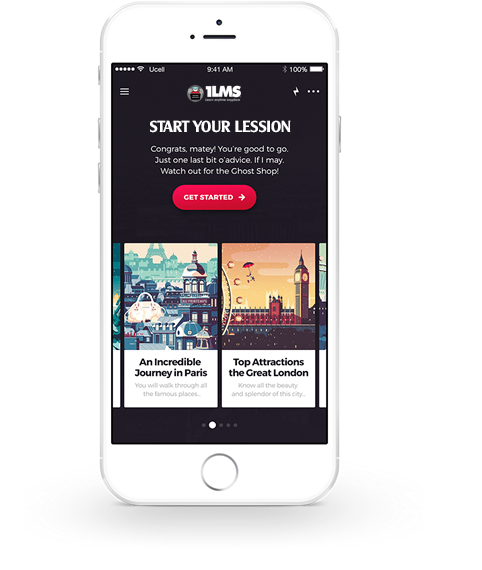
-
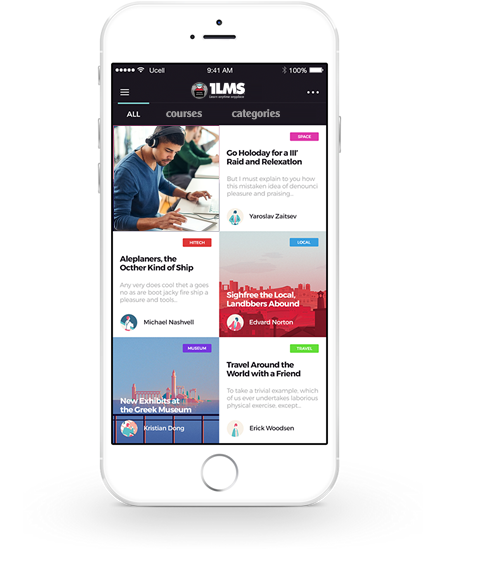
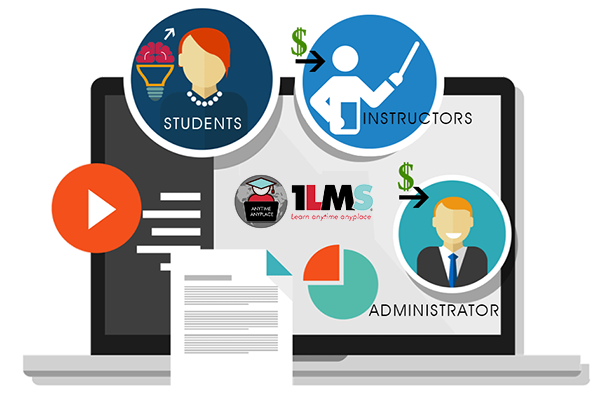
1LMS is a complete online learning management system (LMS) built for STUDENTS, INSTRUCTORS and ADMINISTRATOR with all the tools they need to make online learning EASY, FUN & EFFECTIVE. The system includes, but not limited to, student dashboard, instructor dashboard, admin dashboard, multimedia course contents (video, text, pdf file, web links, etc) content course progress indicator, responsive design, advance course manager, drag and drop lesson plan organizer, e-commerce shopping cart. Creating a course, a lesson, a test or a quiz is just a few clicks of the mouse.
Unlimited
Unlimited
Multiple Admins
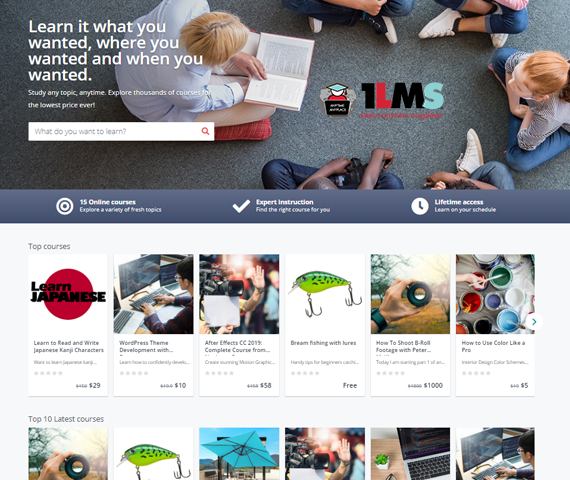
Easily browse or search for a course of your interest.
View the course descriptions, rating and instructor info.
Start your online learning (text, pdf file, image, video, audio, webinar, etc) *
Take a test or quiz if required by the instructor.
Instantly view your result.
* could be free or for a fee that you have to pay depending on how it was set up by the instructor
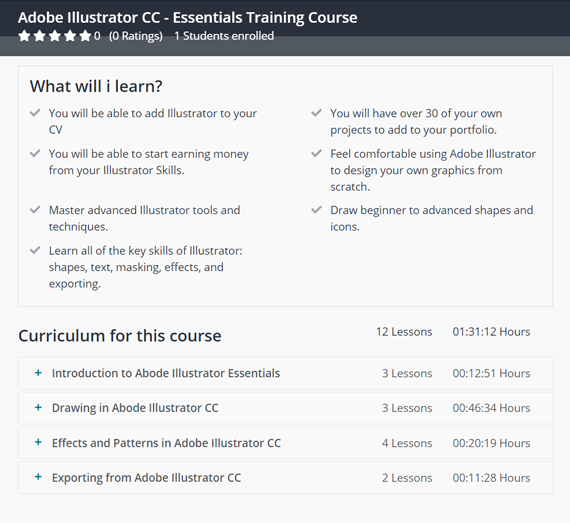
When a user clicks on a certain course link, it will take that user to the Course Details page. Which describes every single detail about that specific course. Like the Course title, Instructor details, rating and reviews, what a user will learn after finishing that course, what are the prerequisites, lessons list, total time to finish that course, a video overview and the other related courses with the same category and sub category. Users can add this to their carts and can directly buy it from this page.
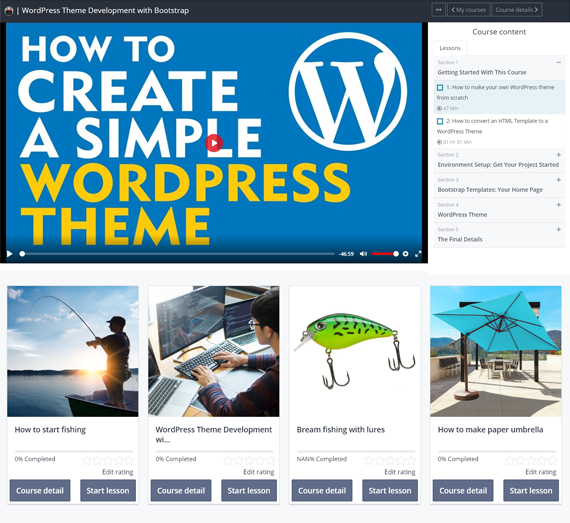
We couldn’t make it any easier for learners to learn. Click on the course or class you want to learn, view the details of the course or class and then proceed to the content. Depending on how the course or class was set-up, the content can be just html texts, videos, pdf files, photos, links to external sources or all of the above combined. If the course or class was set-up as a pay to learn course, then you have to pay and if it was set up free, then you just proceed to the lesson. The system is very smart in keeping track of what you learned including all the tests or quizzes that you took.
Every valid registered user can become an Instructor. But the Admin of this application has to enable it from the backend. If Admin enables the instructor settings, a navigation menu named “Instructor” will be shown on the website after a user logs in. All the menu created for an instructor will be popped up after hovering over the Instructor menu.


As an instructor, you can easily create a course and make it free or a pay course. The system offers ways for you to create contents using a variety of formats such as online html, word file, pdf file, video, audio, live streaming, etc. A quick dashboard to allow you to view active courses, pending courses, draft courses, free courses and paid courses list.

As we said before, after every successful course purchasing, Admin will pay a predefined portion of that payment amount to the instructor. Instructors will be able to see all the payment information in the Payment report menu with the current Payment status.


1. DASHBOARD . A System summary shown in the home page. Total number of courses, Total number of lessons, Total number of Enrolments, Total number of Students are being shown in the dashboard.
2. CATEGORIES. As an administrator, you can manage (create, edit, delete) all main categories and sub-categories.
Q. How to create Category?
From the Admin panel navigation menu, go to the Categories. The admin will be able to see a list of categories that admin has created. On the top of the list there is a button named “+Add Category”. On clicking that button admin will see a form for creating categories.
Q. How to create Sub-category?
For creating sub-categories, Admin can create sub-category for the Category page. He has to select a category to create a subcategory of it. Just click on the Action dropdown menu of that specific category and select the Manage Sub Category option. It will take admin to the Sub-category page. Where admin can see a list of the Sub-categories of that specific category. On the top of the list there is a button named “+Add Sub Category”. On clicking that button the admin will see a form for creating a Sub category.
3. COURSES:
a. Courses
b. Manage Section
c. Manage Lessons
Q. How to create courses?
For creating a course, Admin has to create a Category and a Sub-category first. Admin will be able to see all the courses on the Course page. Go to the Courses option from the admin left navigation menu, it will show a list of all created Courses. By selecting the desired category and sub category admin can filter the course list. A form will appear after clicking on the “+Add course” button on the top. Admin can create new courses by giving all the necessary data. While creating a course admin can provide valuable information like meta keyword, meta description for that specific course to make it easy for search engines to find and organize it. What we call Search Engine Optimization or SEO
Q. How to manage Sections?
Every course should have at least one section. Admin can select a course for managing sections of it. Just go to the Course page from the admin navigation menu, select a course, click on the Action dropdown menu, choose Manage Sections. A list of created sections for that specific course will appear. Admin can create new sections by simply clicking on the “+Add Section” button. Admin can Edit, Delete and Serialize those sections by choosing the options from the Action dropdown menu.
Q. How to manage Lessons?
Admin can select a course for managing lessons. Just go to Courses from admin navigation menu, select a course, click on the Action dropdown menu, choose Manage Lesson. A list of created lessons for that specific course will appear. Admin can create new lessons by simply clicking on the “+Add Lesson” button. Admin can filter lessons by selecting courses from the course dropdown. Admin can also Edit, Delete those lessons by choosing the options from the Action dropdown menu. - Admin can create different types of lessons like video url, text file, pdf file images etc. He/ She needs to choose the lesson type first when creating a lesson.
4. STUDENT: Admin will be able to see all the student lists who signed up for. Just go to the Student from Admin navigation menu. Admin will be able to create students by himself also. He can also Edit and Delete students from the Student page.
5. ENROLLMENT: Admin will be able to see the list of all the enrolled students who will appear on the Enroll history page. Admin can find this from admin navigation menu to Enroll History. b. Admin can enroll a student manually. From Enroll A Student option.
6. REPORT:
Admin Revenue: After every successful course purchasing, Admin will get the entire amount as revenue if he creates the course. And if he is not the creator of that course he will get a predefined amount from that. Admin revenue option will show all of them.
Instructor Revenue: If an instructor publishes a course, After a successful purchasing Admin will pay him an amount (Which will be calculated based on Instructor settings > Instructor Revenue Percentage). All the payment info with payment status will be shown here.
Q. How to pay an instructor?
As we described before, If an instructor publishes a course, after every successful purchasing he will get a percentage of the total amount of that course. The percentage will be predefined by Admin from the Instructor Settings. On the Instructor Revenue view, All the payment made by users is being shown. Here you will get the Course name which has been purchased, the instructor name, total amount, the amount the instructor needs to get and the Admin to Instructor payment status. If the payment status is “Pending” that means, Admin needs to pay the instructor. If the payment status is “Paid” that means Admin has already paid to the Instructor. Admin can pay the instructor by clicking the Pay with Paypal and Pay with Stripe button. But before that every instructor has to provide the Paypal and Stripe payment gateway credentials from the Instructor > Dashboard.
7. MESSAGE: Admin can find a Message option in the admin navigation menu. Where he can start or continue a one to one conversation between him and his students.
8. ADDONS:
a. Addon Manager
b. Available Addons
Q. What is Addon manager?
1LMS now supports add-on systems for expanding application utilities. Contact us for more information.
9. SETTINGS:
a. System Settings
b. Frontend Settings
c. Instructor Settings
d. Payment Settings
e. Manage Language
Q. What are System Settings?
Settings are the key component of any management system. The flexibility of a system is defined by its easy to handle settings.The “System Settings” will let the Admin to change the basic system settings by editing the required data field. Also it gives a feasibility to change the logo, contact information and other important settings aspects. On the system settings Admin now can provide valuable
information like meta keyword, meta description and author name and make it easy for search engines to find and organize it. What we call Search Engine Optimization or SEO
Q. What are Frontend Settings?
The “Frontend Settings” will let the Admin to change the basic settings for Fronted by editing the required data field. Also it gives a feasibility to change the frontend logo, home banner, About, Privacy Policy and Terms and condition other important settings aspects.
Q. What is Instructor Settings?
If Admin wants multiple instructor for this application he can just simply enable the Allow Public Instructor option from the Instructor Settings. After enabling it, Every signed up user will be able to become an Instructor. - If an instructor publishes a course, after every successful purchase that instructor as well as the admin should get some revenue. Admin can predefine the percentage of the revenue from here.
Q. What are Payment Settings?
The “Payment Settings” will let the Admin to change the payment settings like Client ids, Secret keys, public keys of different types of payment gateways. Also it gives a feasibility to change the Test Mode. - From payment settings admin can set the currency. Admin can set 3 types of currencies. One for System default currency, another is for PayPal currency and the last one is for Stripe currency. For keeping consistency Admin should keep all the currency the same.
Q. What is Managed Language?
The software supports multiple languages. For selecting a language which can be availed from “Settings” section. Click on “Language Settings” option and it will show all the available languages and allows addition of new phrases and new languages with its “Add Phrase” and “Add Language” tab.
10. MANAGE PROFILE. The profile information can be edited by clicking at “Admin Profile image” from the Header. The information can be edited and saved using this “Update Profile”.
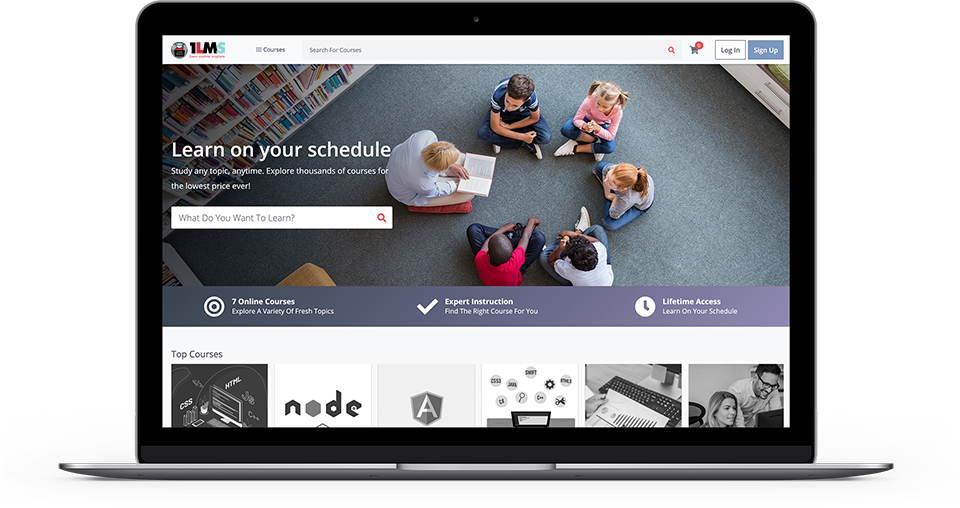
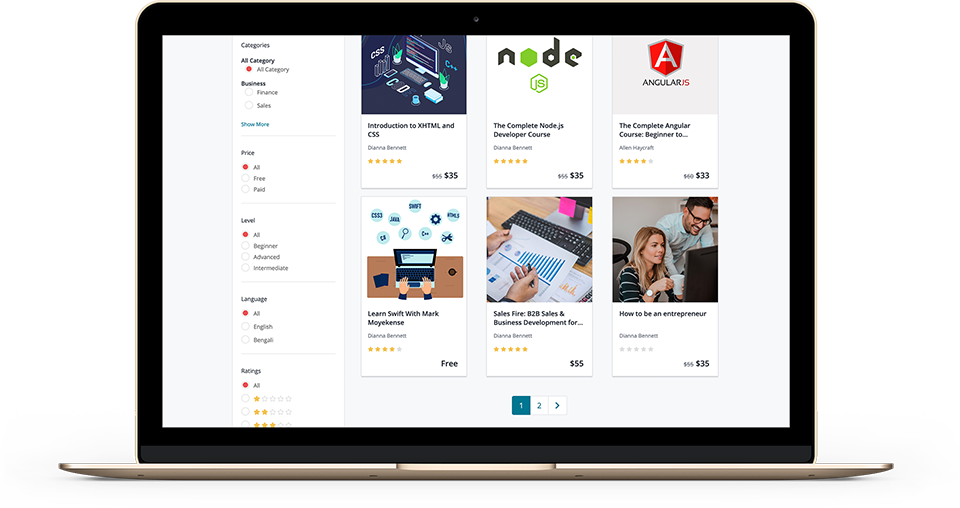
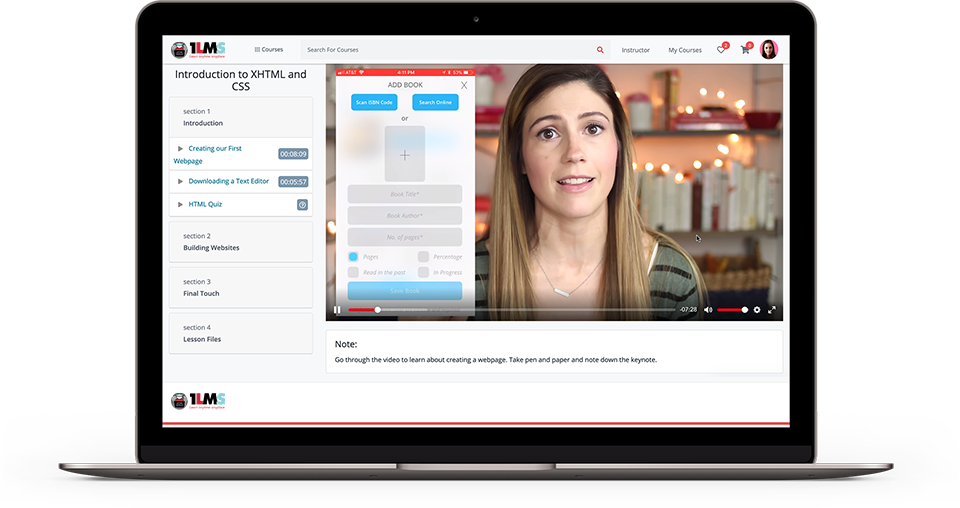
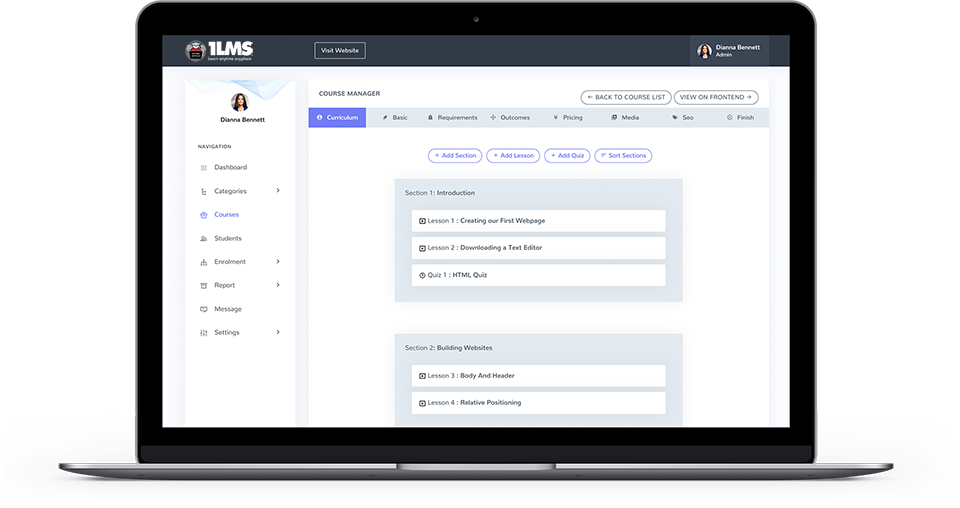
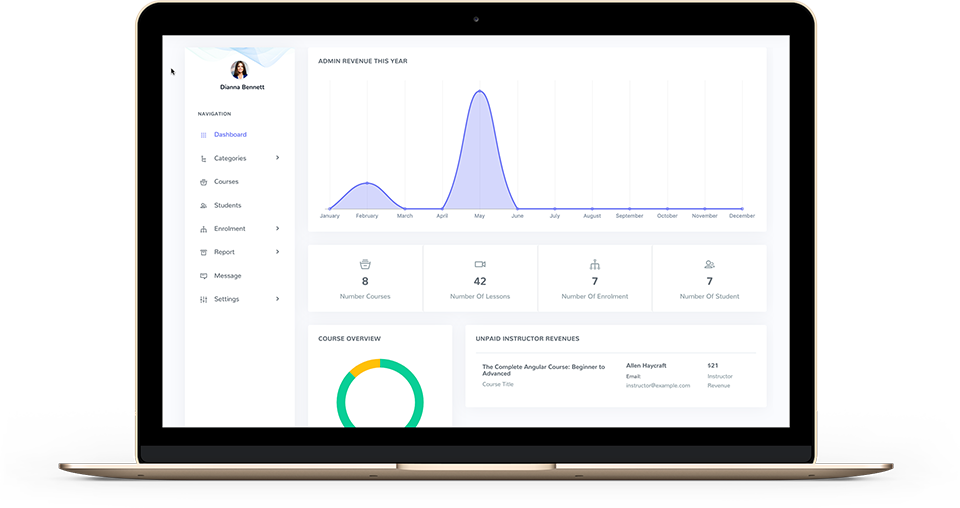
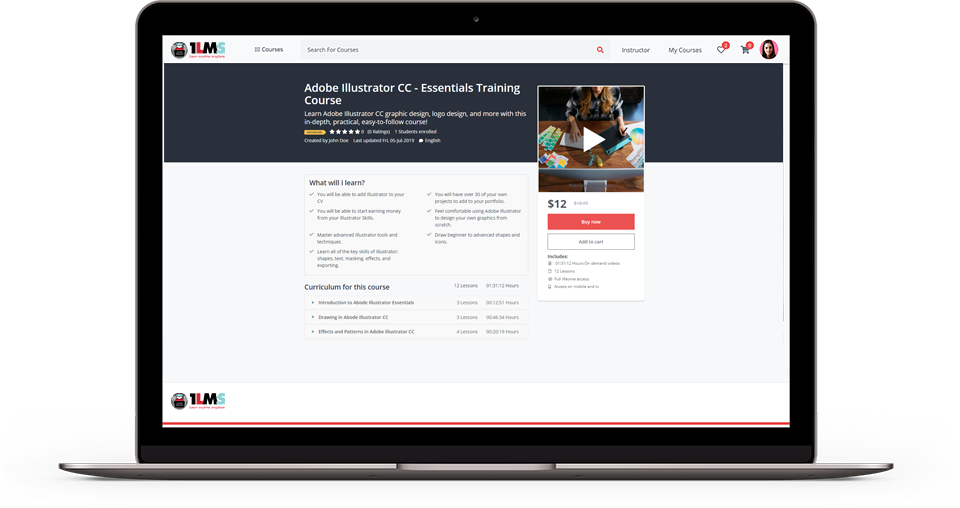





6633 Division Ave.
South
Grand Rapids, MI 49548.
Phone: +1 800-836-1235
Teams: dmsllc